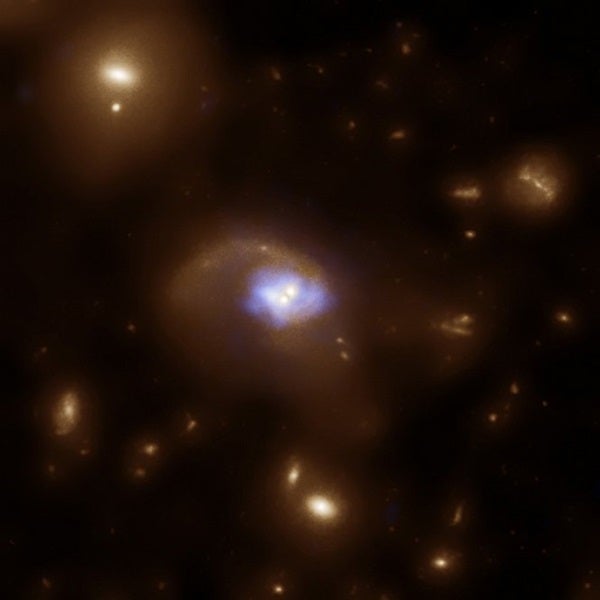Black holes are a common topic for scientific discussion today — but to the astrophysicists, theoretical physicists, and mathematicians attending Indiana University’s Capra Conference on radiation reaction, predictions still outweigh proof when it comes to black holes and their interstellar antics.
Hosted by IU for the first time in the event’s 12-year history, the Capra Conference each year affords scientists an opportunity to compare notes about how much closer they’ve come to theoretically confirming Einstein’s general theory of relativity using predictions about black holes and their interactions with other stellar bodies.
By modeling the effects of gravitational waves produced when smaller black holes or neutron stars orbit massive black holes, scientists — including Jonathan Thornburg in the College of Arts and Sciences’ Department of Astronomy — believe they may one day be able to quantify the stretching and compressing of space-time as caused by those same gravitational waves predicted in Einstein’s general theory of relativity.
“Suppose we have a small black hole, perhaps 10 times the mass of our Sun, orbiting a large black hole, perhaps a million times the mass of our Sun,” Thornburg said. “This system, often called an EMRI (extreme mass ratio inspiral), will produce tiny ripples in the fabric of spacetime, causing the small black hole to gradually spiral in toward the large black hole.”
Extreme mass ratio refers to the large ratio between the masses of the two black holes, and radiation reaction refers to the “drag” force from the emission of gravitational waves (or gravitational radiation), which causes the small black hole to gradually spiral in toward the large black hole.
Researchers from around the world who attend the Capra Conference are working to calculate the spiraling motion of that small black hole and the associated gravitational waves, Thornburg explained. It can take as little as 10 minutes for a small black hole the size of a white dwarf to orbit a massive black hole; but it can take years — and in turn, more than 100,000 orbits — before the smaller black hole merges with the massive one.
“Because there are so many EMRI orbits, even a tiny change in how long each orbit takes can build up over time to produce a large change in the emitted gravitational waves,” Thornburg said. “So measuring these gravitational waves gives a very sensitive test of whether general relativity is correct.”
Gravitational waves are so weak that they have yet to be directly detected, but in theory they constitute the distorting power behind Einstein’s four-dimensional space-time universe, where gravity is a characteristic of the curvature of space and time. For Einstein, space-time would be distorted when black holes collide and generate gravitational waves, and those distortions in turn would influence the motion of other bodies.
“The main interest in this problem is as a fundamental test of whether Einstein’s general theory of relativity is correct,” Thornburg said. “In this case, the test is whether the large black hole’s gravitational field, and therefore the small black hole’s orbital motion in that gravitational field, matches our theoretical calculations.”
Scientists from around the United States and from Canada, the United Kingdom, France, Japan and Ireland are expected to attend the conference that begins Monday (June 15) and ends Friday (June 19). Expected among the attendees is Robert M. Wald, chair of the University of Chicago’s Department of Physics and a recognized leader in the field of black hole physics.
The Capra Conference is named after the American film director Frank Capra, whose former ranch was donated to the California Institute of Technology and then became the site for the first conference on radiation reaction in 1998. Last year, the conference took place in Orleans, France.
Thornburg, a senior research scientist at IU since September 2008, was a lecturer in the General Relativity group in the School of Mathematics at the University of Southhampton, United Kingdom, and prior to that spent nearly seven years as a postdoctoral fellow at the Albert Einstein Institute in Potsdam, Germany.










